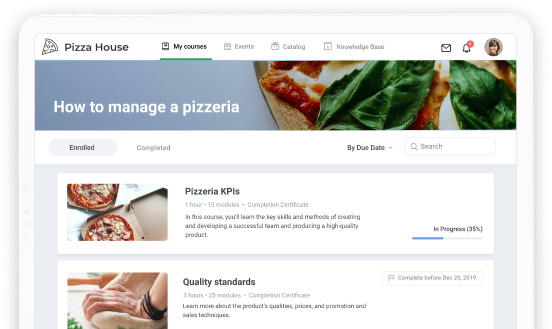Managing Different Learning Styles in the Mobile Classroom

The four primary learning styles present unique opportunities for online trainers. Whether your eLearners respond best to visual, auditory, kinesthetic or reading content, the mobile learning environment naturally complements each of these styles. Understanding and teaching to all your learners in a balanced way can have a tremendous impact on the engagement levels and success of your online training course.
Visual Learners:
Visual learners respond best to visceral material, such as vivid images, bright colors, shapes, and design elements. Do not underestimate the importance of an eye-catching, well-polished presentation to these students. Although your presentation design may seem trivial compared to the course material, having a well-crafted PowerPoint presentation can help these learners visually organize and internalize content. In a corporate learning environment, we recommend using fresh, cool colors such as blues, grays, and greens when accenting content to keep your presentation bright, but professional. Use images and videos that relate to your material to accentuate important information. Try to steer clear of generic icons or abstract images that don’t have a meaningful relationship with your content, and always take time to pause and discuss the importance of each image to strengthen your visual learners’ mental connection.
Auditory Learners
For auditory eLearners, try incorporating discussion-based activities into your lecture. This gives trainees the opportunity to listen to various perspectives and voice their own opinions. The discussion also allows for the verbal repetition of key material, giving auditory learners the benefit of hearing your content more than once. Music can similarly promote learning. Auditory learners have the ability to associate audio cues with certain information, aiding in retention and memory. Play music softly in the background during group work activities or during individual brainstorming sessions to help foster these types of mental relationships without being distracting.
Kinesthetic Learners
Although the connection between kinesthetic learners and the mobile learning environment may seem disjointed, the very act of typing on a keyboard or clicking a mouse can form a physical association for these types of learners. Try using group work, activities that encourage trainees to turn their webcam on, or timed online activities that appeal to kinesthetic learners in your presentations. Depending on your class size, you may also encourage kinesthetic learners to present material as an in-house expert or guest lecturer.
Reading Learners
Lastly, eLearners who enjoy reading content may benefit from taking your lecture home to re-read and absorb key information. Use a PowerPoint converter service to transform your presentation into an HTML page that students can access from their phone, tablet or home computer. Having your course content available anytime, anywhere gives these learners the freedom to review content, print it out and mark it up as they read. We also recommend using an easy-to-read sans serif font that is clean and crisp. This type of font is easier to read, which is why it is often used on websites. Although the sans serif font may feel less formal, clean lettering can aid in the learning process.
What type of learner are you? Have any cool classroom experiences involved these different styles of learning? Share your stories in the comments below!
